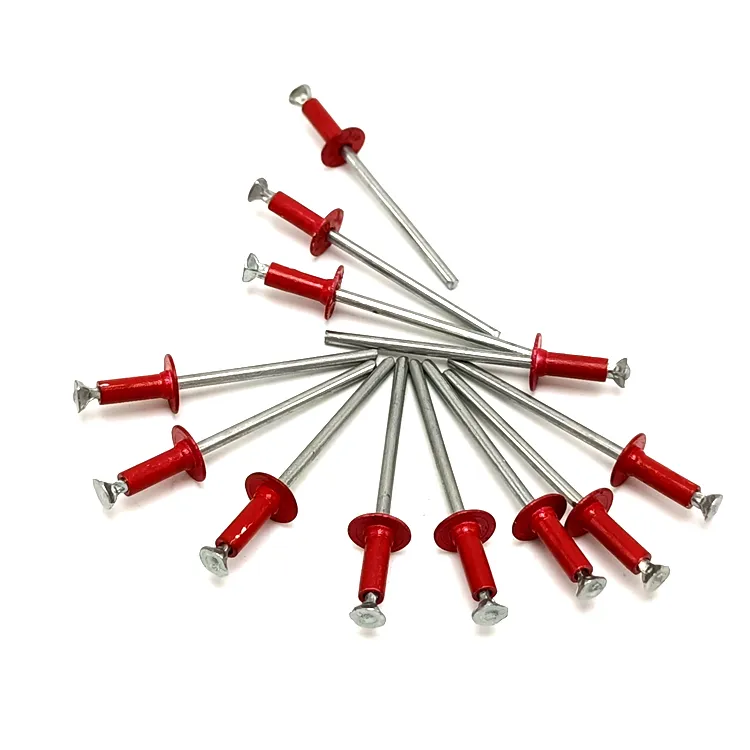- Time:2024/01/31 Posted:Dongguan prospect hardware accessories co.,ltd
An Introduction to Standard Fasteners
Fasteners are crucial components used in various industries, including construction, automotive, and manufacturing, to connect and secure objects together. Standard fasteners play a significant role in ensuring the integrity and reliability of assemblies. To effectively work with standard fasteners, it is essential to understand the key terminology and specifications associated with them. This article will provide a comprehensive overview of the terminology and specifications related to standard fasteners.
1. Types of Standard Fasteners
When it comes to standard fasteners, several common types are widely used in different applications. These include:

1. Bolts: These are externally threaded fasteners designed to be used with a nut for fastening two or more objects together.
2. Nuts: Nuts are internally threaded fasteners that are used in conjunction with bolts to secure objects. They come in various styles such as hex nuts, wing nuts, and lock nuts.
3. Screws: Unlike bolts, screws have their own threaded shaft and are usually driven directly into a material to hold objects together. They are commonly used with tapped holes.
4. Washers: Washers are thin, disk-shaped fasteners that distribute the load of a fastener over a larger surface area, preventing damage to the surface and providing additional support.
5. Rivets: Rivets are permanent fasteners that are used to join two or more pieces of material by deforming the rivet body, creating a secure bond.
2. Common Fastener Specifications
Understanding the specifications of standard fasteners is crucial for selecting the appropriate type for a given application. Here are some common specifications to be aware of:
1. Thread Size: The thread size refers to the diameter and pitch of the threads on a fastener. It is usually specified using a standardized measurement system, such as the Unified Thread Standard (UTS) or the International Organization for Standardization (ISO) metric system.
2. Length: The length of a fastener is the distance from the top of the head to the tip of the threaded portion, excluding the head's height.
3. Material: Fasteners can be made from various materials, including stainless steel, carbon steel, aluminum, and brass. The material choice depends on the application requirements, including factors such as corrosion resistance, strength, and cost.
4. Grade/Class: Grades or classes are assigned to fasteners to indicate their mechanical properties and strength. For example, in the case of bolts, the grade is often specified using a numerical system, such as Grade 8 for high-strength bolts.
3. Proper Fastener Installation and Torque
Achieving proper fastener installation is vital to ensure the reliability and safety of assemblies. The following considerations should be kept in mind:
1. Torque: Fasteners are typically tightened using a torque wrench to ensure optimum clamping force. The recommended torque values can vary depending on the fastener type, size, and material. Over-tightening or under-tightening can lead to issues such as joint loosening or failure.
2. Preload: Preload is the tension induced in a fastener when it is tightened. It helps to maintain the clamping force, counteracting external forces that may cause loosening. Proper preload ensures the integrity of the joint and minimizes the potential for failure.
3. Lubrication: Lubricating the fastener threads can aid in achieving proper torque and reduce the risk of galling or seizing. However, when using lubricants, it's crucial to follow the manufacturer's recommendations to avoid compromising the fastener's performance.
4. Standards and Certifications for Fasteners
To ensure reliability and quality, numerous standards and certifications govern the production and usage of standard fasteners. Some widely recognized standards include:
1. ISO 9001: This certification demonstrates that a manufacturer's quality management system meets international standards, ensuring consistent quality of fasteners.
2. ASTM Standards: The American Society for Testing and Materials (ASTM) establishes standards for various fastener-related parameters, including material properties, dimensions, and testing methods.
3. SAE Standards: The Society of Automotive Engineers (SAE) sets standards for fasteners used in the automotive industry, covering critical aspects such as material properties, thread specifications, and performance requirements.
Conclusion
In conclusion, understanding the key terminology and specifications related to standard fasteners is essential for selecting, installing, and maintaining reliable assemblies. By acquainting yourself with the various types of fasteners, their specifications, proper installation techniques, and applicable standards, you can ensure the integrity of your projects. Remember to consult industry standards and seek professional advice when needed to make informed decisions regarding the use of standard fasteners.
